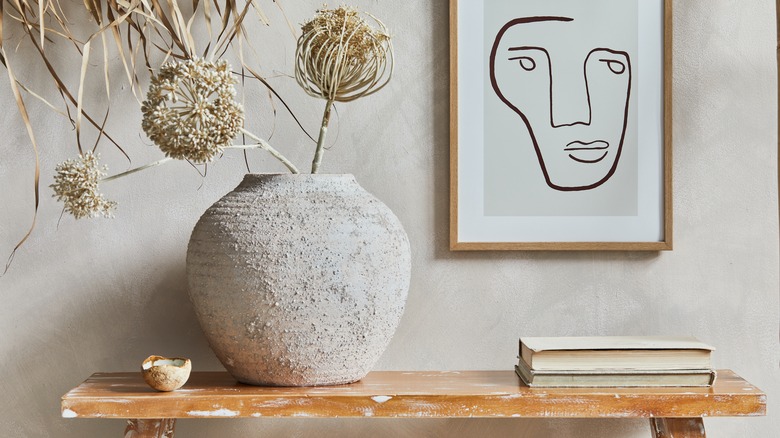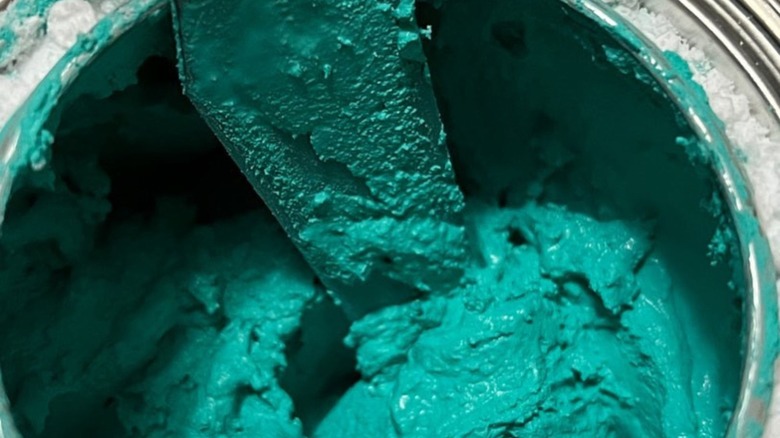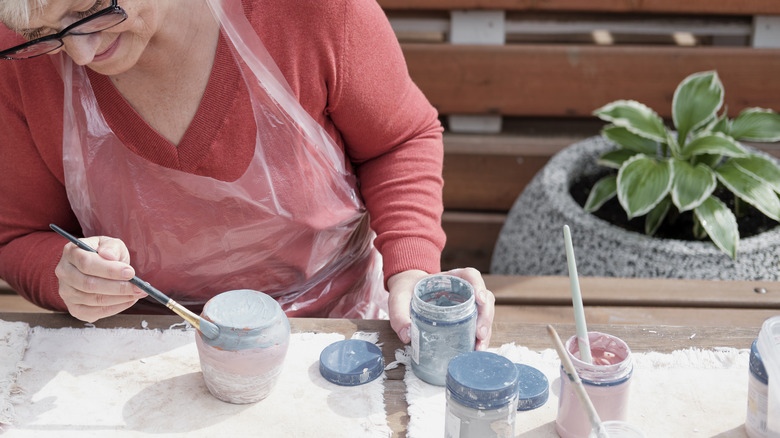Try This Baking Soda Painting Technique For A Textured-Matte Look
Matte finishes have gained popularity due to their understated elegance and sophistication. And you can DIY at home, transforming ordinary pieces into extraordinary works of art using a simple yet versatile technique. By incorporating baking soda into your paint, you can effortlessly create a captivating textured-matte look on various surfaces, including vases, furniture, and more. The beauty of this technique lies in its simplicity and cost-effectiveness. This budget-friendly approach allows you to experiment and customize your creations according to your unique vision without straining your wallet.
The tiny particles of baking soda blend with the paint, resulting in a thicker, grittier consistency that adds depth and dimension to the painted surface. This texture gives the finished product a visually appealing tactile quality. In addition, baking soda also plays a role in altering the sheen of the paint and giving it a muted matte appearance. Rather than investing in expensive finishes or textured paints, you can achieve the desired effect with a basic combination of paint and baking soda. This way, you can achieve a new look without breaking the bank.
Mixing and painting
To begin, gather your acrylic paint colors and baking soda. The general guideline is to mix one part baking soda with two parts paint but feel free to adjust the proportions to achieve your desired level of texture. Experimentation with ratios can lead to unique effects, allowing you to customize the outcome to suit your style. Combine the paint with the baking soda in a container, stirring thoroughly, until it reaches a smooth and consistent texture. Ensure there are no clumps of baking soda remaining, as they can affect the evenness of the textured surface.
Now comes the exciting part — applying the baking soda paint mixture to the object you wish to transform. Before you begin, make sure the surfaces are clean and dry. Pay attention to the composition and desired visual outcome as you apply the paint mixture. Take your time to ensure thorough and even coverage. Allow each coat to dry completely before adding additional layers to build the desired texture. Once you are satisfied with the texture and appearance, let your painted items dry thoroughly.
Finishing touches
For vases, consider using painter's tape to create clean lines or protect specific areas from the paint. A foam or bristle brush is ideal for complete and controlled application, allowing you to layer the mixture evenly. If you prefer a more three-dimensional surface, play with other tools such as a palette knife or a sponge to create unique patterns and effects.
To further enhance the textured-matte effect, consider additional techniques and materials. Experiment with layering different colors, creating depth and visual interest. You can also explore using other materials, such as texture gels or sand, to add extra dimension and tactile elements to your creations. These enhancements will make vases and other decor pieces genuinely unique and visually captivating.
Finally, apply a suitable sealant or varnish specifically designed for the type of surface you have painted. This protective layer adds a professional touch, safeguards the finish, and helps maintain its longevity.


